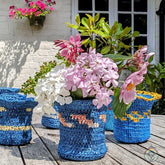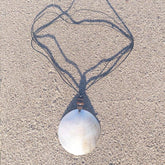What is a Sweatshop: Part One
What is a Sweatshop? Part One
The term sweatshop is one of those familiar words that is bandied about quite liberally without many of us truly understanding what it means.
We know it is not good, and definitely not fair, but what exactly is it, and is there much we can do about it?
Origin
The phrase sweatshop was coined in 1850, meaning a factory or workshop where workers are treated unfairly, for example having low wages, working long hours, and in poor conditions. Since 1850, immigrants have been flocking to work at sweatshops in cities like London and New York for more than one century. Many of them worked in tiny, stuffy rooms that are prone to fire hazards and rat infestations. The term sweatshop was used in Charles Kingsley's Cheap Clothes and Nasty (1850) describing such workplaces create a ‘sweating system’ of workers.
It is interesting that a full 170 years on that phrase “Cheap Clothes and Nasty” still resonates so strongly.
How About Today?
A sweatshop or sweat factory is a crowded workplace with very poor, socially unacceptable, or illegal working conditions. The work may be difficult, dangerous, climatically challenging, or underpaid. Workers in sweatshops may work long hours with low pay, regardless of laws mandating overtime pay or a minimum wage; child labour laws may also be violated.
Sweatshops are also sometimes implicated in human trafficking when workers have been tricked into starting work without informed consent, or when workers are kept at work through debt bondage or mental duress, all of which are more likely if the workforce is drawn from children or the uneducated rural poor.
Sweatshops conditions resemble prison labour.
Who would condone such practices?
In 2014 Apple was caught "failing to protect its workers" in one of its Pegatron factories. Overwhelmed workers were caught falling asleep during their 12-hour shifts and an undercover reporter had to work 18 days in a row. Chinese sweatshops known to have increased numbers of suicidal employees have suicide nets covering the whole site, in place to stop over-worked and stressed employees leaping to their deaths.
Recently, Boohoo came under light since auditors uncovered large chain of factories in Leicester producing clothes for Boohoo were only paying their workers between £3-4.
World-famous fashion brands such as H&M, Nike, Adidas and Uniqlo have all been criticized for their use of sweatshops.
Child Labour
Child labour is one of the most serious impacts that sweatshops have brought. More than 250 million children are in the employment of which 170 million of them are engaged in textiles and garments industry in developing countries.
“In hopes of earning a living, many girls in these countries, such as Bangladesh and India, are willing to work at low wages for long working hours” according to Sofie Ovaa, an officer of Stop Child Labour.
Most fashion manufacturing chains employ low-skilled labour and as child labour are easier to manage and even more suitable than adult labour for certain jobs such as cotton picking, it becomes a particular problem in sweatshops as they are vulnerable with no backups.

Part Two: What can we do about it (easy). Next week.












Leave a comment
All blog comments are checked prior to publishing